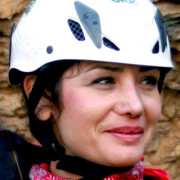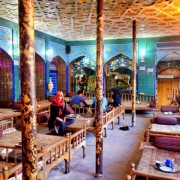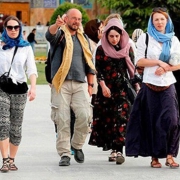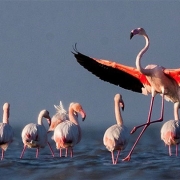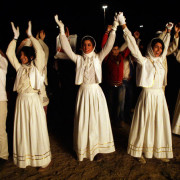Archive for year: 2016
Iran, the Best Destination for Halal Tourism in the World
Whether choosing a tour to Iran for your Islamic Holidays or any other occasion during the year this country is the best fit for Halal tourism. Persians were followers of Zoroastrianism. After the arrival of Islam in this land, it became the official religion of the country. As a result, the entire country operates under Islamic rules. In other words, Iran is a 100% Halal destination for those who want to enjoy their vacation without neglecting their beliefs.
What is Halal Tourism?
The word ‘Halal’ refers to food or activities that are allowed by the Shariah of Islam. Halal food must have halal meat which means the meat must be slaughtered according to Islamic law (dhabiha) as instructed in the Quran. Halal leisure activities involve separate beaches, swimming pools and spa and nonalcoholic drinks served in restaurants and cafés.
Why is Iran a proper destination for Muslims?
Iran has it all; halal food in restaurants and markets, prayer facilities, and Islamic bathrooms in all cities.
Our Muslim tourists do not need to worry about the food in Iran’s restaurants because by law all restaurants must serve halal food. The drinks served in restaurants and cafés are all nonalcoholic. When they travel to Iran, they do not need to ask the hotel receptionist to give them the list of halal restaurants in the city that they are staying.
All the public places such as shopping malls, subway stations, entertainment centers, parks, and even mountain shelters have separate prayer rooms for men and women.
Also in Tehran and Mashhad, there are parks and water-parks designed for women only.
Major religious cities in Iran
Iran has two major holy cities: Mashhad and Qom. The holy shrine of Imam Reza the eighth Imam of Shi’as is located in Mashhad. The complex holds the largest mosque in the world by dimension and the second-largest by capacity. Non-Muslim tourists enjoy visiting this atmospheric place too, especially at night. Annually millions of tourists visit Imam Reza Shrine.
Qom holds one of the main Hawzas in the world, the other one is in Najaf, Iraq. Hawza is a seminary where Shi’a Muslim clerics are trained. It has been centuries that Qom has Shi’a academic centers and it accepts students from around the world in its institution.
Our Muslim tourists can enjoy all Iranian coasts during their tour to Iran too. There are private beaches designed for men and women so everyone can freely enjoy the beach with their swimming suits. There are also mixed beaches that ladies can enjoy their time with their family members and the Islamic outfit.
Besides being a perfect destination for the admirers of culture, history, and natural attractions Iran is one of the most multi-ethnicity and multi-cultural countries in the world, in fact, it has always been this way from the days of Cyrus the Great. As a result, all our dear guest travelers can truly enjoy their vacation in Iran regardless of their religion and beliefs. Rich historical past and a unique culture added to breathtaking sceneries, mountains, safaris, deserts, seas, and subtropical forests plus great food and super-friendly locals make Iran the ideal destination for those who want halal services.
Are you planning to travel to Iran and looking for an Iran travel agency? Check out our Iran Religious tours.
Iran visa for US, UK or Canadian citizens
Travel to Iran as the U.S, U.K, or Canadian citizen is legal. The first advice for citizens of the three countries is to apply for their Iran visa 2-3 months before their trip.
Before applying for a visa , American, British, and Canadian travelers must obtain a travel authorization number from the Iranian Ministry of Foreign affair (MFA). In order to obtain the number form MFA the traveler must have an itinerary that will be given to him/her by an Iranian travel agency. The travel agency that is organizing your trip can help you with the authorization number process. Once you have the number you can apply for your visa and you can choose which consulate or embassy you wish to pick up your visa from.
There are three choices for travelers. First is to book a trip with a tour guide that gives you the opportunity to have a totally tailor-made tour itinerary. It is just like solo traveling.
Second option to pay less for the travel is to book a small group tour. It is cheaper than traveling with a tour guide and you will have fellow travelers on your trip.
And the third is to book a tour with a bigger group that will be even cheaper and more people will accompany you during your Iran travel.
All the travelers including those travel to Iran as the U.S, U.K, or Canadian citizen can enter all the seven Iran’s Free Trade, Industrial & Special Economic Zones (Kish and Qeshm Island, Chabahar, Aras, Anzali, Arvand, and Maku) without a visa.
Whether you are traveling with a private tour or a group tour you will be warmly welcomed by the Iranian officers at the gate. The only occasion in which your admission to Iran will be denied is if you have Israel visa or stamp in your passport.
Another rule that Iran travelers must be informed of is the Iran dress code. Headscarves and loose clothing are mandatory for Iranian and tourist ladies. Gentlemen are required to wear long pants.
Once the mentioned citizens are inside the country, everything is as normal as it is for other tourists. Despite what the western media is trying to show, Iran is a safe country for tourists. In fact, all Iran travelers enjoy the hospitality and warm welcomes from Iranians during their trip.
Are you planning to travel to Iran and looking for an Iran travel agency? Check out our Iran tours.
What is the Dress code in Iran?
Iran Dress Code
Many prospective travelers that want to visit Iran, worry about the dress code here. Reading reports or watching carefully picked media footage makes most western people think women should be walking around like black wrapped-up mummies in Tehran. A funny image of Iran dress code!
Yes, due to Iran being the Islamic Republic, there is an appropriate dress code to be followed. It should be complied with in public spaces and businesses open to the public. And yes, it is enforced by the law, and like any good traveler special care should be taken to respect the law when you visit a new country. But to say that you should worry about it sounds a little bit… panicky?
Let me explain to you the Iran dress code, and why it’s not that much of a hassle.
Iran Dress code for Men:
- Long pants to the ankle.
- No sleeveless t-shirts.
Iran Dress code for Women:
- Long pants to the ankle.
- A scarf for at least partially covering your head and your neck.
- A manteaux or long shirt or tunic that covers your bum and chest or, in more elegant words, “hides the shape of the body”.
- Shirts or manteaux must have sleeves that cover your arms up to the elbow.
That’s it. Have fun in Iran!
In different cities or towns of Iran, Iranian ladies’ outfit is different, but you do not need to worry about this diversity, you can wear a standard outfit that you are more comfortable with during your visit to different cities.
“But, can I wear makeup?”, ”Should the scarf be black?”, “Can the pants be leggings?”, “Can men wear a tie?”, “Is it possible to wear sandals?”…. Relax!
The only rules are the ones written above five rules in total. If you have questions, look above. If your question isn’t being addressed there, then you should not worry about it.
For the sake of a more general answer, if you really have to insist, the primary precept of Islam that this dress code is supposed to invoke is “modesty”. Whether man or woman, look technically modest about your body, and you’ll have no problems. You might want to look more modest if you go to famously religious cities to avoid some curious glances. And should any authorities approach you and tell you you’ve missed some small details, smile, nod, and gracefully do what you’re told.
So you might understand from the above that there is also a lot of space for you to fashion yourself up in many different ways.
When you come to Tehran, you’ll see that women who live in the historic center of the city dress in the more conservative chador. In the north and south of Tehran people wear completely different clothes, which should not make you fearful.
But if you still insist on more information about Iran dress code for ladies, here are more explanatory tips:
The scarf can have any color or pattern that you might wish. During the summer try to use super light material and light-colored scarfs. And during colder seasons you will appreciate a warmer material that would keep your head and neck warm. You are not required to cover all your hair, if bangs or other parts are showing don’t worry.
The body must be covered with loose clothing at least to the knee or mid-thigh length. You can wear baggy shirts on warm days and coats during the winter. You can also buy manteaux from stores and malls in Iran at an affordable price.
Jeans are absolutely fine and are very usual among Iranian ladies.
For footwear, there are no limitations. Sandals or open-toed shoes are no problem.
For visiting, shrines or mosques wearing a “Chador” is obligatory and you can rent them at that place or buy them at a cheap price in a store.
you can also wear your usual make-up in Iran.
In general, as a tourist lady, you can stay as stylish as you wish in all cities or towns of Iran as long as most of the hair is covered and the clothing is not too short or tight.
Are you planning to travel to Iran and looking for an Iran travel agency? Check out our Iran tours.
World Wetlands Day
February 2 is the day the Convention on Wetlands in Ramsar, Iran, in 1971 was signed by 18 countries. Today 169 countries have signed and joined the Ramsar Convention. United Nations has marked this day as World Wetlands Day.
Mr. Eskandar Firouz, the Department Chief of Environmental Protection Organization of Iran in 1971, recognized the essential role of wetlands on human, plant, and animal life and made the effort to make international society aware of the wetlands’ high importance by creating a convention. He made everyone responsible for protecting these zones around the world.
Wetland is referred to a flat ground that is always wet and saturated by water. This setting creates a vital role for us in many ways such as protecting our coastlines, creating a huge variety of life, saving water, and controlling erosion. Wetlands create the most fertile environment for agriculture and fish. Rice, the food for more than half of the world’s population grows in wetlands only and 40% of 20,000 different fish species live in this area. Wetlands store carbon dioxide that regulates climate and they are very rich in plant genetic resources. In the tourism industry wetlands are crucial as well. They are the perfect location for bird watching and different water activities.
The theme for 2024 World Wetlands Day is Wetlands and human wellbeing.
The residents of one of the villages in the West Azerbaijan province of Iran proved it is still possible to save our swamplands by regenerating the Kani Barazan wetland in a very difficult climate situation. Kani Barazan was added to the Ramsar Convention in 2012.
Billions of people depend on wetlands for their living, yet these areas have become wastelands and we have lost 64% of our swamps and marshes since 1900; that is why saving wetlands is saving humans’ life!
Sadeh Festival, a Celebration for Blessings (Date, History)
The 10th day of month Bahman in Persian calendar, 30th of January, is marked as Sadeh, an ancient Persian festival when, according to ancient Iranians’ belief, King Hushang discovered fire centuries before the arrival of Islam in Iran.
“Sad” in Farsi means hundred and some historians believe the reason to choose Sadeh to name this day is that there are 50 nights and 50 days until the Persian New Year celebration, Nowruz and since fire was discovered on this day, it brings light to the night and turns it into a day, so the night will be counted as a day. As a result, 50 nights will add to 50 days and becomes hundred days till Nowruz.
To honor the holiness of fire, as one of four main elements in nature, Zoroastrian Persians lit a huge bonfire as the sun starts to set and people gather by the fire to say prayers and to appreciate their God for creation of fire.
Sadeh is a national celebration deeply rooted in Zoroastrian religion and is still celebrated in many cities of Iran including Tehran, Karaj, Yazd, Kerman, Isfahan, Shiraz, and many more.
The ceremony of Sadeh has been described in historical books with some varieties in different cities and villages. In Kerman before the sunset two Zoroastrian Priests lit the huge pile of bushes that have been gathered for this purpose as they are singing Zoroastrian prayers and when the entire pile is fired up people hold hands, circle around the fire, and sing anthems and prayers special to this day and event. And as the fire becomes smaller youths jump over it.
Another reason to celebrate this day is because most of cold winter days are passed now. As a symbol of bringing warmth back to the farm lands, farmers take the ashes of Sadeh fire and spring it on their farm lands and plantations.
Sadeh has survived long centuries and many invasions by Mongols, Afghans, and Arabs. It is a valuable ceremony among all Iranians. Today everyone regardless of their religious beliefs celebrates Sadeh to value the spirit of God.
Sadeh ceremony is the celebration of warmth, light, and blessings that fire generously offers to humans.
Aeropodium
VISA Procedure How to apply for Iran visa? We are pleased to offer our services for obtaining maximum 30 days tourist visa. In order to start your visa process ; We need Visa Form and passport copy We send the documents to M.O.F Your visa reference number will be ready after 15 working days The […]

